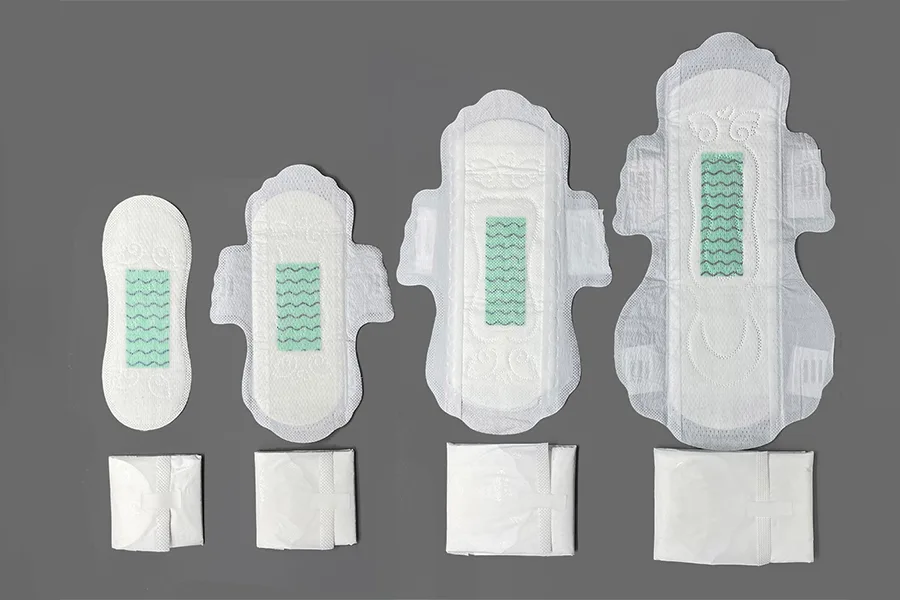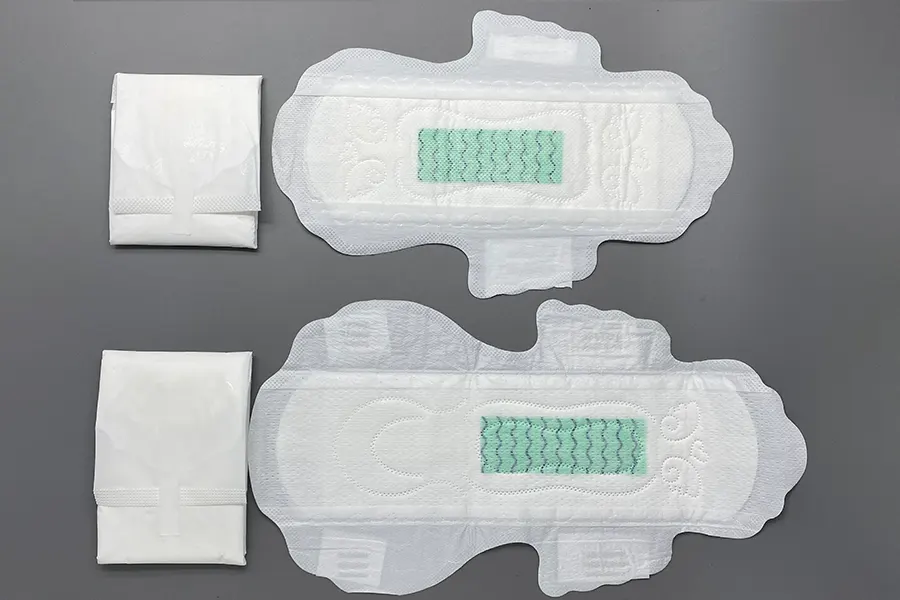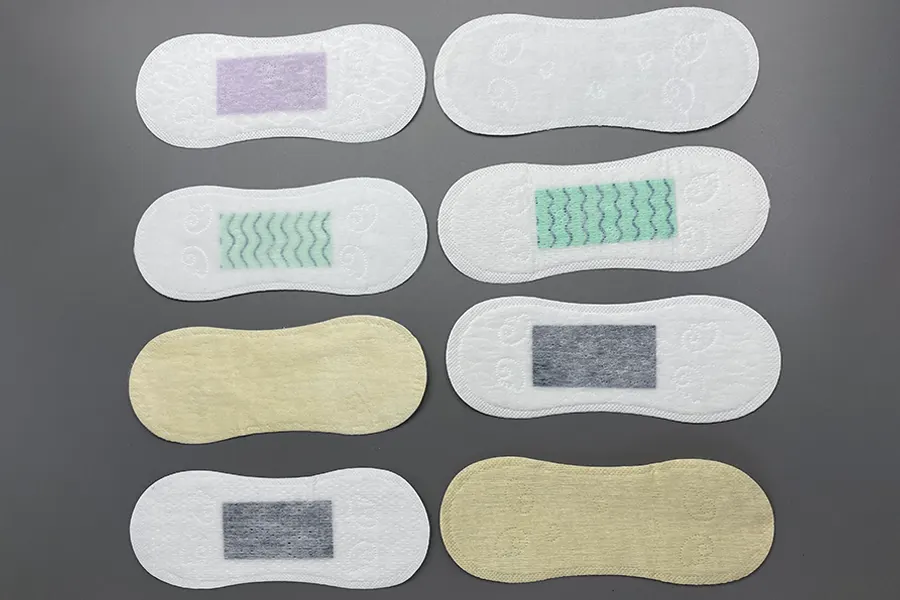As the market and its products continue to be segmented, more convenient products are being developed for all aspects of our lives, including, of course, sanitary pads and panty liners for women’s periods. However, as menstrual products are very intimate, businesses have adopted a more subtle approach to promoting them directly, which has resulted in many women not really understanding the difference between these products that they need to accompany them every month. What is a sanitary napkin? What are sanitary pads? What is a panty liner? And the various terms used to promote ultra-thin, thinner, thicker and extra heavyweight – are they just referring to the difference in size?
So in this article we’ll take a deeper look at the differences between sanitary pads and panty liners, and how to choose the right pad for you.

Before that, let’s talk a little about menstruation.
Every woman will have her period every month from the time she has her first period at around 13 until she is around 50, except during pregnancy. But please don’t be ashamed of this, as it is a special feature that many men can only dream of. There are many who say that women live longer than men precisely because it is a very healing process as women can expel waste blood from their bodies at this particular time. Menstruation is usually 5-7 days, and this time will vary depending on the body type. Usually the flow is very small for the first 1-2 days, from days 3-5 the flow is very high and then gradually decreases for the last 1-2 days. During non-menstrual periods, the vagina may also discharge leucorrhoea.
What are sanitary pads?
Sanitary pads are made up of a cotton surface layer, an absorbent layer, a breathable layer and a protective layer with wings and tails. The core of a sanitary pads are the absorbent layer, so there are many brands that differentiate them according to the amount of water they absorb and the thickness of the pads. For example, the number of drops of water means different amounts of absorbency, the more drops means high flow, as well as the information on the packaging such as ultra-thin/thinner/regular/thick/extra heavy.
So the three main indicators to look at when preparing a sanitary napkin for yourself are sizes (length), droplets (water absorption) and thickness. Then just choose according to your situation.
Normally, when the menstrual flow is small, use the smaller length 180mm/245mm during the day and 320mm at night (days 1-2);
when heavy flow, you can use 245mm/290mm during the day and 360mm/420mm at night (days 3-5);
for the last day or two when the flow is low, use the same as at the beginning.

What are sanitary pads?
Sanitary pads are made up of a cotton surface layer, an absorbent layer, a breathable layer and a protective layer with wings and tails. The core of a sanitary pads are the absorbent layer, so there are many brands that differentiate them according to the amount of water they absorb and the thickness of the pads. For example, the number of drops of water means different amounts of absorbency, the more drops means high flow, as well as the information on the packaging such as ultra-thin/thinner/regular/thick/extra heavy.
So the three main indicators to look at when preparing a sanitary napkin for yourself are sizes (length), droplets (water absorption) and thickness. Then just choose according to your situation.
Normally, when the menstrual flow is small, use the smaller length 180mm/245mm during the day and 320mm at night (days 1-2);
when heavy flow, you can use 245mm/290mm during the day and 360mm/420mm at night (days 3-5);
for the last day or two when the flow is low, use the same as at the beginning.

What are panty liners?
A panty liner is a combination of a skin-friendly surface layer, a padding layer, a breathable layer and a protective layer, without wings, usually 155mm/160mm in length. Unlike sanitary pads, the padding layer is only there to ensure the softness of the product, panty liners are not absorbent and therefore cannot be used as menstrual pads.Therefore, panty liners are usually used to treat vaginal discharge.
With this in mind, let’s compare and contrast:
panty liners vs sanitary pads

Common problems.
1/ Can I use sanitary napkins during my non-menstrual period?
Yes. The main purpose of a panty liner during non-menstrual periods is to cope with the leucorrhoea that is excreted from the body and it is best to use a panty liner; however, if there is a slight leakage, sanitary pads are recommended. However, it is important to note that sanitary pads are usually thicker than panty liners, which affects breathability.
2/ What should I do if I accidentally drop a sanitary pad into the toilet?
You should get a hook to remove it as soon as possible as the core absorbent layer of the sanitary pads contains SAP, which will swell up and cause the toilet to clog over time.
3/ How can I avoid staining the sheets when using pads at night when the menstrual flow is high?
Pick a longer pad if possible, a lot of leakage happens from the buttocks.
4/ How do I choose a sanitary pad that has a high water absorption capacity?
It is easy to differentiate based on the size of the number of drops on the packaging; however, it is important to note that it is not the thicker the pad that absorbs more water, but rather the SAP content that determines this.
5/How often do I need to change the liners and pads?
We recommend changing your sanitary pads or panty liners in 1-2 hours as time can cause problems such as bacterial growth.Changing more frequently will make you feel comfortable.
6/Can men wear panty liners?
Yes, prolonged sedentary or strenuous exercise can also cause dampness underneath men, which can be relieved by using sanitary pads or panty liners; of course, many male customers also buy them for post-operative care of haemorrhoids.
7/Can I use panty liners instead of sanitary pads when my flow is lighter?
Yes, but try not to, as panty liners are not absorbent and if you must, remember to monitor and change them more frequently.
8/Can I bring my panty liner with me every day when I am not menstruating?
Yes, but please be careful how often you change them. When choosing a liner, you also need to look at the breathability and skin-friendliness of the liner.
